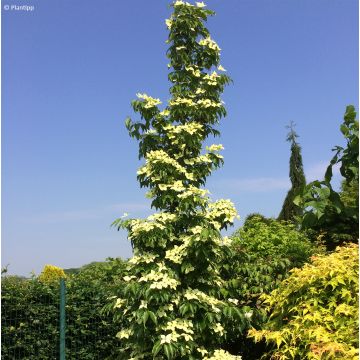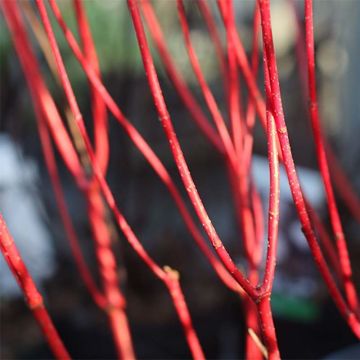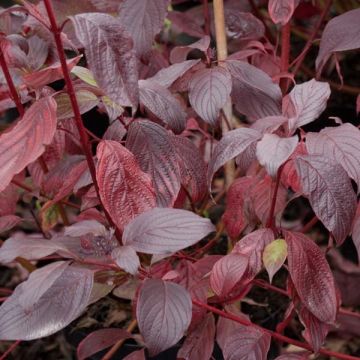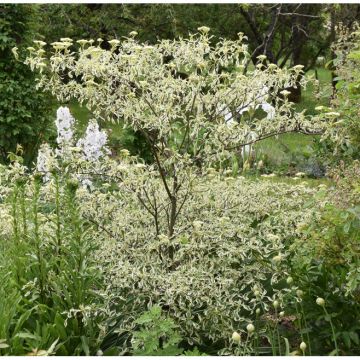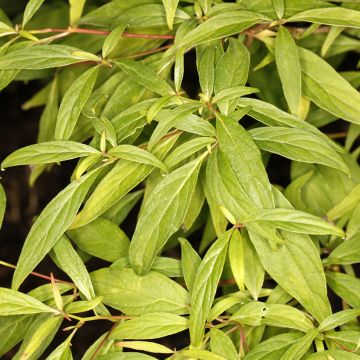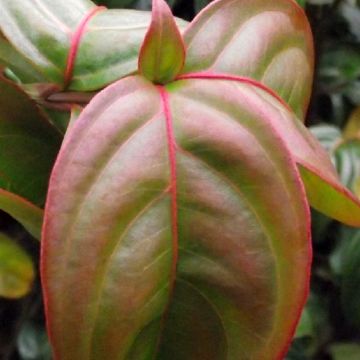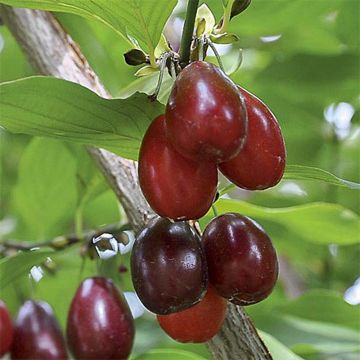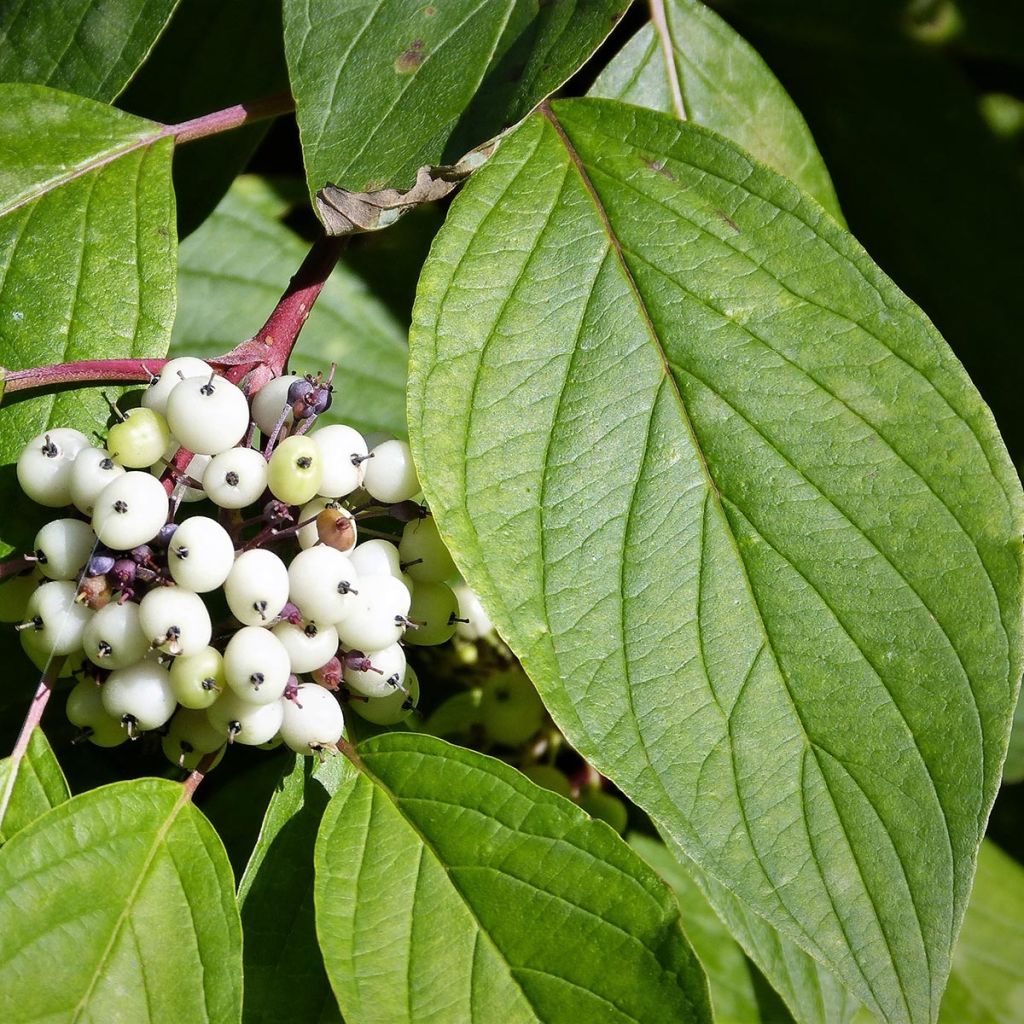

Cornus alba
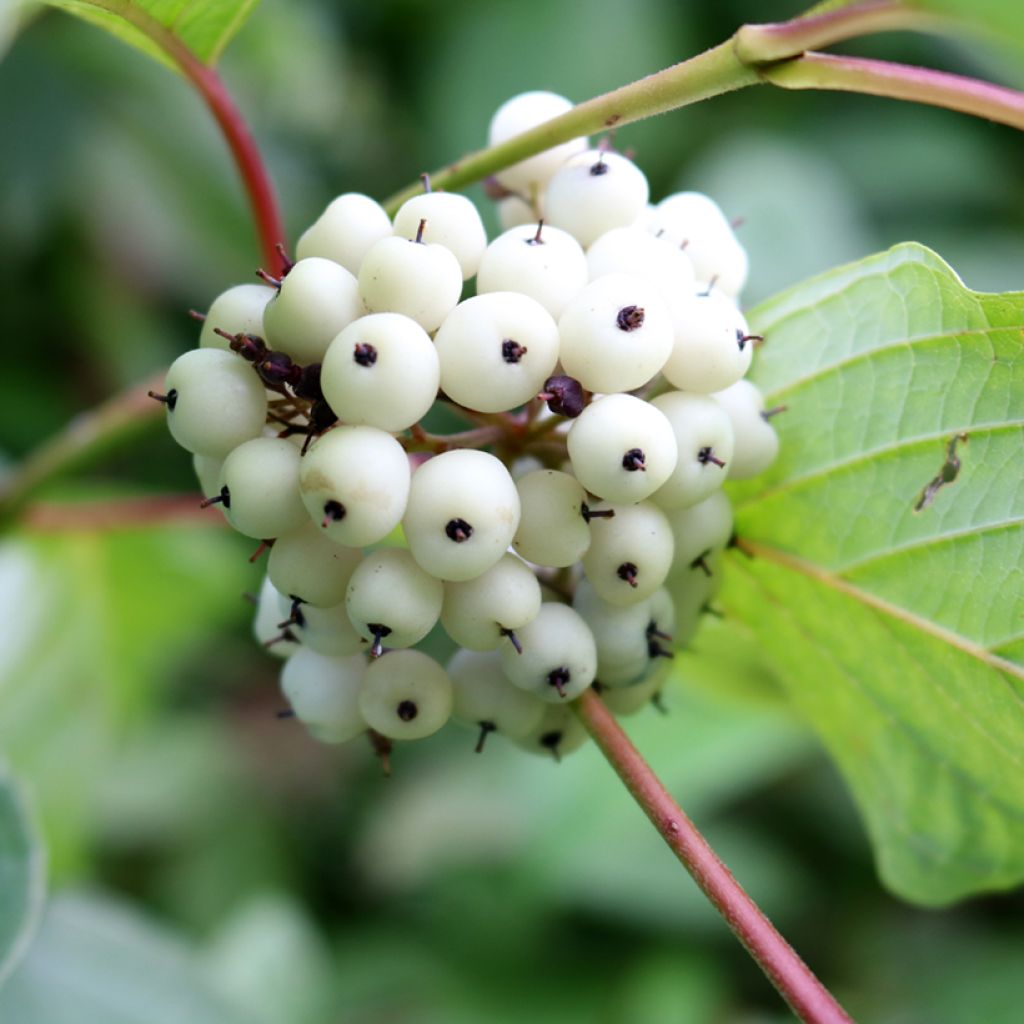

Cornus alba


Cornus alba
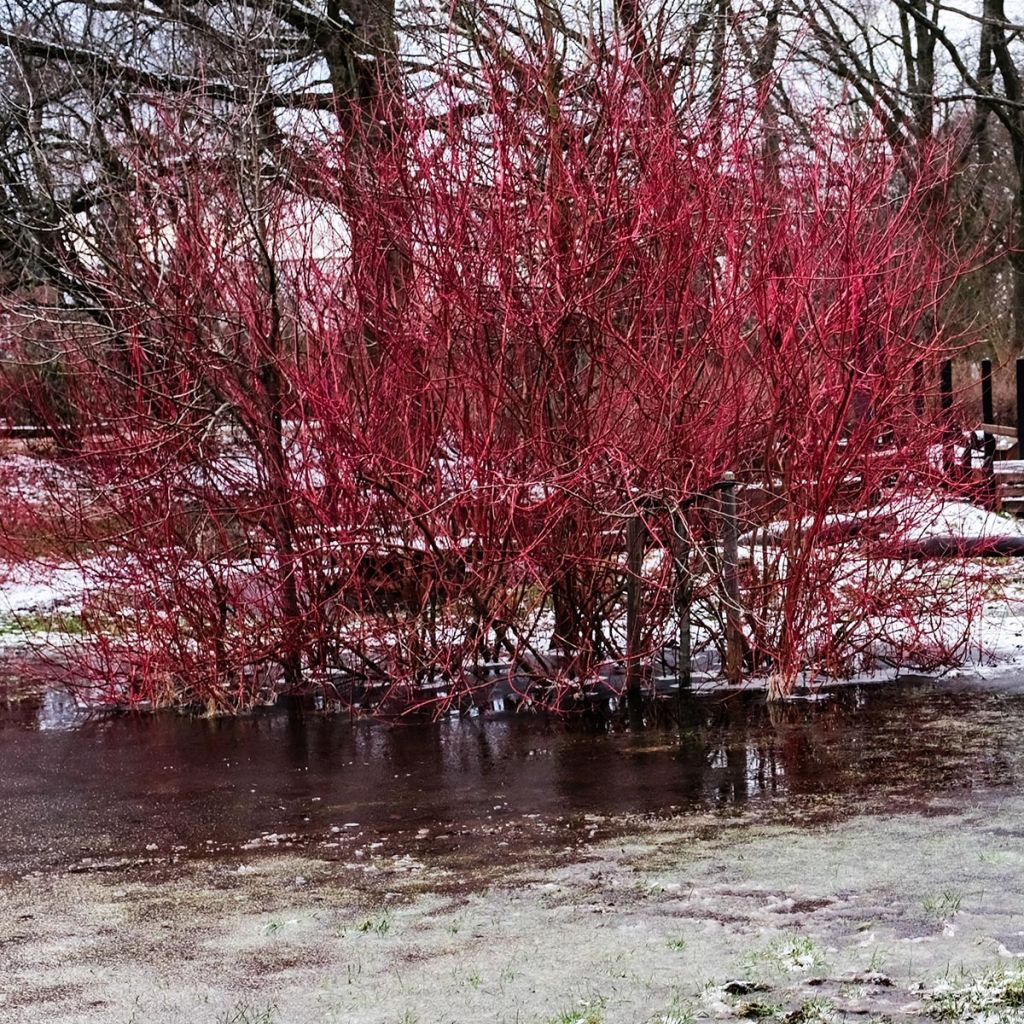

Cornus alba
Cornus alba
Cornus alba
White Dogwood, Siberian Dogwood
Specific research area, well-conditioned plant with healthy roots. However, only 2 stems measuring 60 and 50 cm (24 and 20in) (+ a few twigs). This does not match the dimensions or the photo shown above. I would have expected a bit more volume and height for a plant as 'basic' as the white dogwood.
Robert, 08/03/2023
Special offer!
Receive a €20 voucher for any order over €90 (excluding delivery costs, credit notes, and plastic-free options)!
1- Add your favorite plants to your cart.
2- Once you have reached €90, confirm your order (you can even choose the delivery date!).
3- As soon as your order is shipped, you will receive an email containing your voucher code, valid for 3 months (90 days).
Your voucher is unique and can only be used once, for any order with a minimum value of €20, excluding delivery costs.
Can be combined with other current offers, non-divisible and non-refundable.
Home or relay delivery (depending on size and destination)
Schedule delivery date,
and select date in basket
This plant carries a 24 months recovery warranty
More information
We guarantee the quality of our plants for a full growing cycle, and will replace at our expense any plant that fails to recover under normal climatic and planting conditions.

Would this plant suit my garden?
Set up your Plantfit profile →
Description
Cornus alba, or white dogwood, is perfectly hardy and tolerant of even dry and limestone soils. It forms a large deciduous bushy shrub, wider than it is tall, bearing large green leaves that turn bright orange-red in autumn before falling, contrasting with its clusters of milky blue fruits. Its numerous upright branches with intense red bark stand out beautifully against dull winter backgrounds and represent its main ornamental asset. With exceptional vigour and rapid growth, it is the ideal shrub for creating free hedges or a background for flower beds easily, while keeping the garden aesthetically pleasing in the late season. Plant in groups, in full sun or partial shade, preferably in all types of soil. A brighter exposure intensifies the autumn foliage colouring.
Cornus alba belongs to the Cornaceae family. It is native to Siberia, the banks of the Amur River, and the moist deciduous and coniferous forests found in Russia and Manchuria. It always grows near water, under harsh and contrasting climates that are proof of its hardiness. This deciduous shrub has a bushy, dense habit, slightly wider than it is tall. It is a ramified shrub, with a thicket-like appearance, reaching an average height of 1.5 m (4.9 ft), with a spread of 2 m (6.6 ft). Its growth is rapid. Its branches are shiny and blood-red, both when young and older, and they do not become bare at the base. The deciduous foliage emerges green in spring and ends up red-orange before leaf drop. The leaves are entire, clearly veined and undulate, measuring about 10 cm (3.9 in) in length. Its flowering from late May to late July is not its main asset and is rather subtle, in the form of small white-yellowish flowers arranged in cymes. The flowers are attractive to bees. It is followed by fruiting with creamy white berries containing oily seeds, which turn bluish when ripe. The lower branches produce shoots or root in the ground, without the shrub becoming invasive.
No matter the size and style of the garden, there will always be a dogwood to provide a beautiful decoration. The white dogwood offers a spectacle from autumn to winter, and its relatively modest size allows it to be included in a mixed hedge of medium height or to form a beautiful background for perennial or shrub beds. It can also be planted on the edge of woodland to create a transition with the countryside. Plant alongside Helianthus, Heliopsis or daylilies to create a colourful scene. As it is a shrub that thrives near water, it can be planted, along with Cornus stolonifera 'Faviramea' with yellow bark, behind a foreground of astilbes, not far from a pond.
Report an error about the product description
Cornus alba in pictures
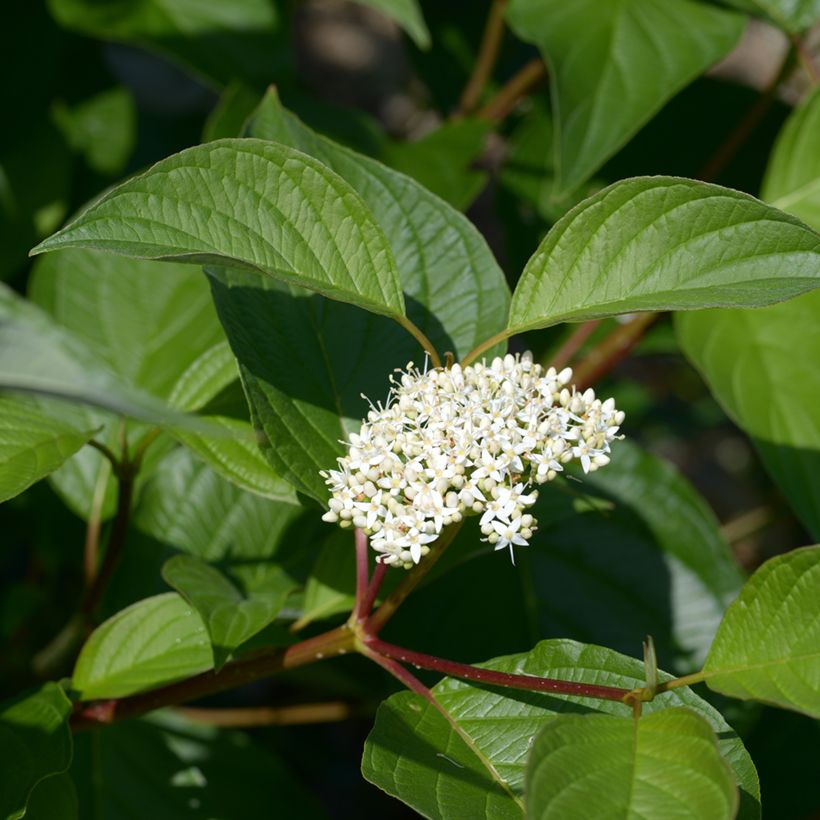





Plant habit
Flowering
Foliage
Bark
Botanical data
Cornus
alba
Cornaceae
White Dogwood, Siberian Dogwood
Cultivar or hybrid
Other Cornus
View all →Planting and care
Cornus alba will thrive in cool, fertile and humus-rich soil, even moist or slightly clayey. However, it is relatively tolerant if the soil is deep, not too compact and not too dry. Plant it from November to March, in a sunny location to enhance the foliage colours, or alternatively in bright semi-shade.
Planting period
Intended location
Care
-
, onOrder confirmed
Reply from on Promesse de fleurs
Haven't found what you were looking for?
Hardiness is the lowest winter temperature a plant can endure without suffering serious damage or even dying. However, hardiness is affected by location (a sheltered area, such as a patio), protection (winter cover) and soil type (hardiness is improved by well-drained soil).

Photo Sharing Terms & Conditions
In order to encourage gardeners to interact and share their experiences, Promesse de fleurs offers various media enabling content to be uploaded onto its Site - in particular via the ‘Photo sharing’ module.
The User agrees to refrain from:
- Posting any content that is illegal, prejudicial, insulting, racist, inciteful to hatred, revisionist, contrary to public decency, that infringes on privacy or on the privacy rights of third parties, in particular the publicity rights of persons and goods, intellectual property rights, or the right to privacy.
- Submitting content on behalf of a third party;
- Impersonate the identity of a third party and/or publish any personal information about a third party;
In general, the User undertakes to refrain from any unethical behaviour.
All Content (in particular text, comments, files, images, photos, videos, creative works, etc.), which may be subject to property or intellectual property rights, image or other private rights, shall remain the property of the User, subject to the limited rights granted by the terms of the licence granted by Promesse de fleurs as stated below. Users are at liberty to publish or not to publish such Content on the Site, notably via the ‘Photo Sharing’ facility, and accept that this Content shall be made public and freely accessible, notably on the Internet.
Users further acknowledge, undertake to have ,and guarantee that they hold all necessary rights and permissions to publish such material on the Site, in particular with regard to the legislation in force pertaining to any privacy, property, intellectual property, image, or contractual rights, or rights of any other nature. By publishing such Content on the Site, Users acknowledge accepting full liability as publishers of the Content within the meaning of the law, and grant Promesse de fleurs, free of charge, an inclusive, worldwide licence for the said Content for the entire duration of its publication, including all reproduction, representation, up/downloading, displaying, performing, transmission, and storage rights.
Users also grant permission for their name to be linked to the Content and accept that this link may not always be made available.
By engaging in posting material, Users consent to their Content becoming automatically accessible on the Internet, in particular on other sites and/or blogs and/or web pages of the Promesse de fleurs site, including in particular social pages and the Promesse de fleurs catalogue.
Users may secure the removal of entrusted content free of charge by issuing a simple request via our contact form.
The flowering period indicated on our website applies to countries and regions located in USDA zone 8 (France, the United Kingdom, Ireland, the Netherlands, etc.)
It will vary according to where you live:
- In zones 9 to 10 (Italy, Spain, Greece, etc.), flowering will occur about 2 to 4 weeks earlier.
- In zones 6 to 7 (Germany, Poland, Slovenia, and lower mountainous regions), flowering will be delayed by 2 to 3 weeks.
- In zone 5 (Central Europe, Scandinavia), blooming will be delayed by 3 to 5 weeks.
In temperate climates, pruning of spring-flowering shrubs (forsythia, spireas, etc.) should be done just after flowering.
Pruning of summer-flowering shrubs (Indian Lilac, Perovskia, etc.) can be done in winter or spring.
In cold regions as well as with frost-sensitive plants, avoid pruning too early when severe frosts may still occur.
The planting period indicated on our website applies to countries and regions located in USDA zone 8 (France, United Kingdom, Ireland, Netherlands).
It will vary according to where you live:
- In Mediterranean zones (Marseille, Madrid, Milan, etc.), autumn and winter are the best planting periods.
- In continental zones (Strasbourg, Munich, Vienna, etc.), delay planting by 2 to 3 weeks in spring and bring it forward by 2 to 4 weeks in autumn.
- In mountainous regions (the Alps, Pyrenees, Carpathians, etc.), it is best to plant in late spring (May-June) or late summer (August-September).
The harvesting period indicated on our website applies to countries and regions in USDA zone 8 (France, England, Ireland, the Netherlands).
In colder areas (Scandinavia, Poland, Austria...) fruit and vegetable harvests are likely to be delayed by 3-4 weeks.
In warmer areas (Italy, Spain, Greece, etc.), harvesting will probably take place earlier, depending on weather conditions.
The sowing periods indicated on our website apply to countries and regions within USDA Zone 8 (France, UK, Ireland, Netherlands).
In colder areas (Scandinavia, Poland, Austria...), delay any outdoor sowing by 3-4 weeks, or sow under glass.
In warmer climes (Italy, Spain, Greece, etc.), bring outdoor sowing forward by a few weeks.
































